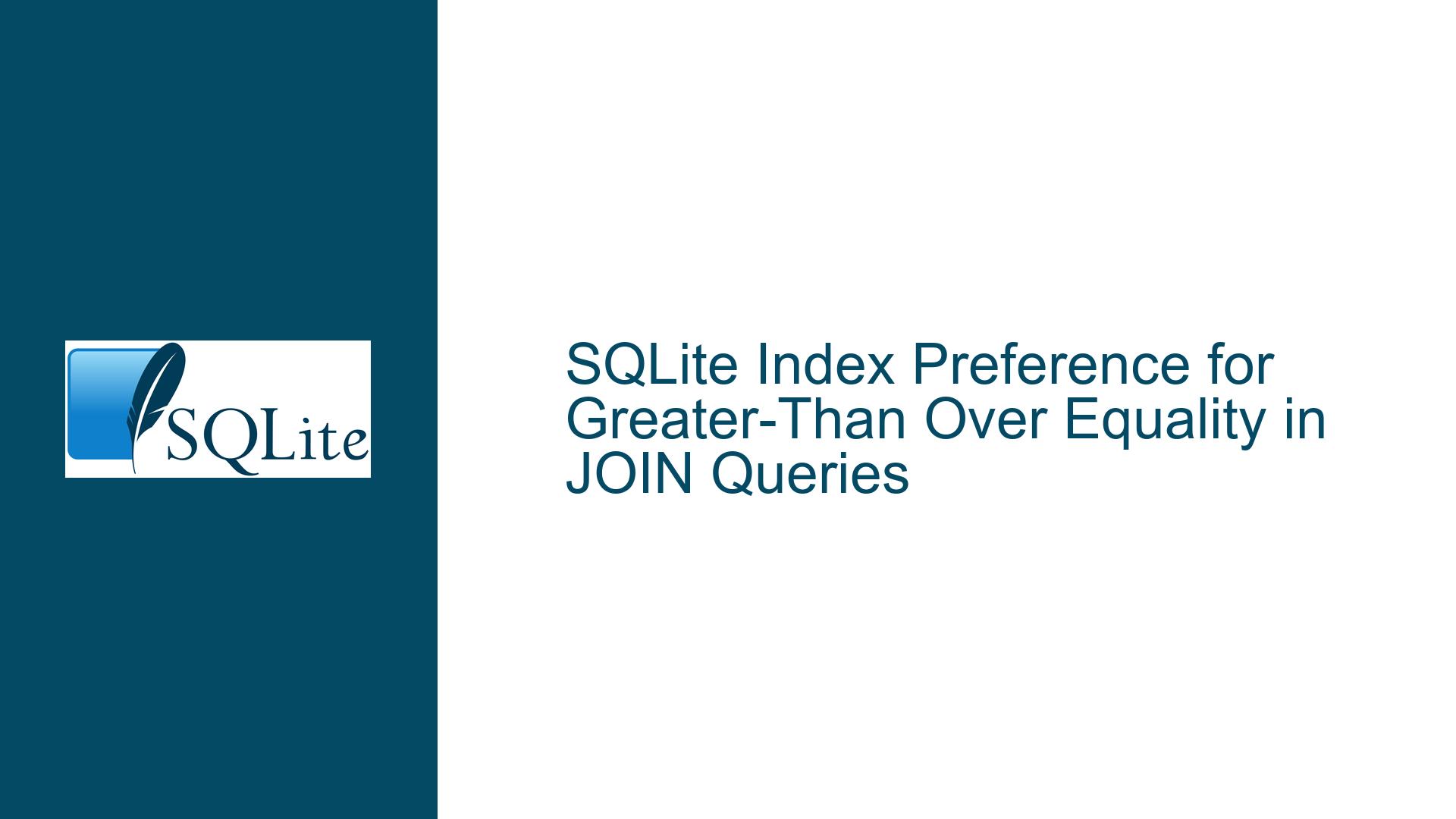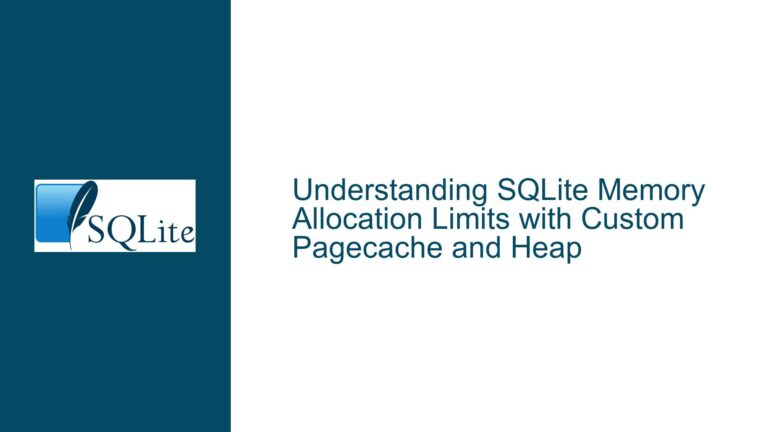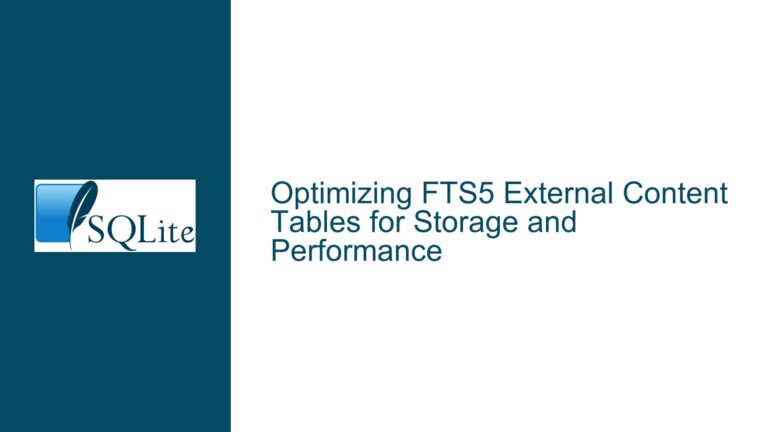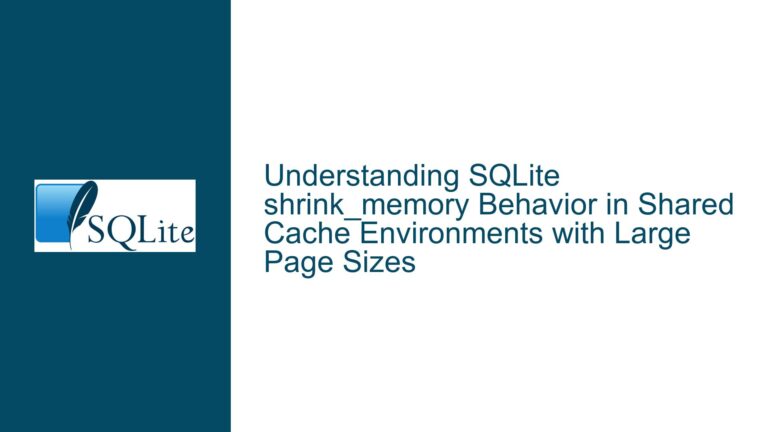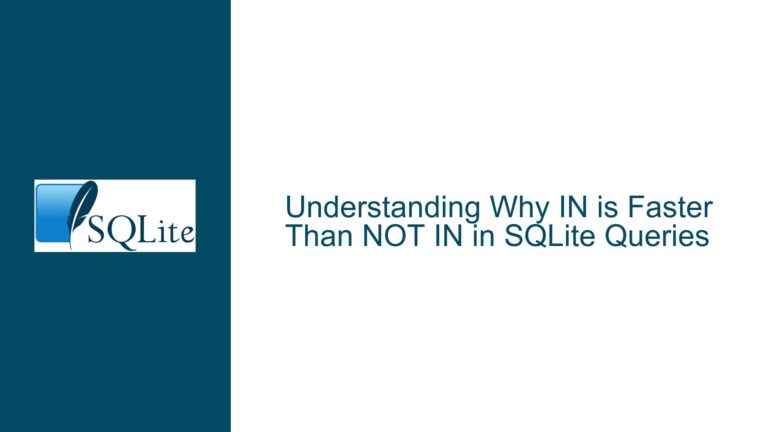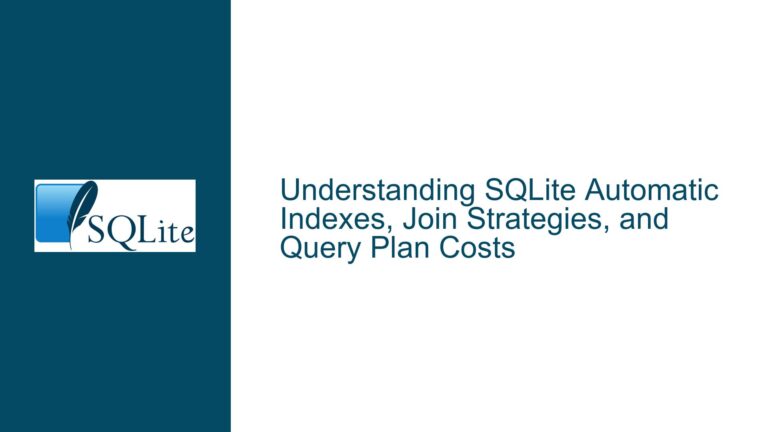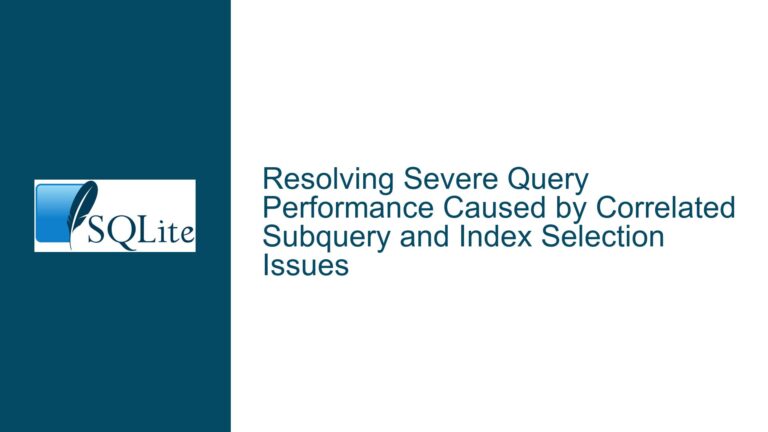SQLite Index Preference for Greater-Than Over Equality in JOIN Queries
Understanding SQLite’s Index Selection Behavior in JOIN Queries
When working with SQLite, one of the most critical aspects of query optimization is understanding how the query planner selects and utilizes indexes. Indexes are essential for speeding up data retrieval, but their effectiveness depends on how well they align with the query’s structure and the data distribution. In this post, we will delve into a specific scenario where SQLite’s query planner appears to prefer an index using a greater-than (>) comparison operator over an equality (=) comparison operator, even when both options are available. This behavior can lead to suboptimal query plans, especially in complex JOIN operations.
Issue Overview
The core issue revolves around SQLite’s query planner choosing to use an index with a greater-than (>) comparison operator instead of an equality (=) comparison operator in a JOIN query. This behavior was observed in SQLite version 3.45.0, where the query planner generated a query plan that utilized an index with a greater-than condition (j>?) rather than an equality condition (j=?). This decision can have significant implications for query performance, especially when dealing with large datasets or complex JOIN operations.
To illustrate the issue, consider the following example:
DROP TABLE IF EXISTS x;
CREATE TABLE x(i INTEGER, j INTEGER, k INTEGER);
CREATE INDEX idx_x_ij ON x(i, j);
EXPLAIN QUERY PLAN SELECT * FROM x a JOIN x b ON b.i = a.i AND b.j = a.k WHERE a.k > 0;
The expected query plan was:
QUERY PLAN
|--SCAN a
`--SEARCH b USING INDEX idx_x_ij (i=? AND j=?)
However, the actual query plan returned was:
QUERY PLAN
|--SCAN a
`--SEARCH b USING INDEX idx_x_ij (i=? AND j>?)
This discrepancy indicates that SQLite’s query planner is making a suboptimal choice in index selection, which could lead to inefficient query execution. The issue was later identified and fixed in a subsequent SQLite version, but understanding the underlying causes and potential workarounds is crucial for database developers working with SQLite.
Possible Causes of Index Selection Preference
Several factors could contribute to SQLite’s query planner preferring a greater-than comparison operator over an equality comparison operator in index selection. These factors include the query planner’s cost estimation algorithms, the structure of the index, the distribution of data in the table, and the specific conditions in the query.
Cost Estimation Algorithms: SQLite’s query planner uses cost-based algorithms to determine the most efficient way to execute a query. These algorithms estimate the cost of different query plans based on factors such as the number of rows to be scanned, the selectivity of the conditions, and the availability of indexes. In some cases, the query planner may estimate that using an index with a greater-than condition is less costly than using an index with an equality condition, especially if the greater-than condition is highly selective.
Index Structure: The structure of the index itself can influence the query planner’s decision. In the example provided, the index idx_x_ij is created on columns i and j. When the query planner evaluates the conditions b.i = a.i and b.j = a.k, it may determine that using the index with a greater-than condition on j is more efficient, particularly if the index is not well-suited for equality comparisons on both columns.
Data Distribution: The distribution of data in the table can also play a role in index selection. If the values in column j are not evenly distributed, the query planner may estimate that a greater-than condition will result in fewer rows being scanned compared to an equality condition. This estimation could lead the query planner to prefer the greater-than condition, even if it is not the most optimal choice.
Query Conditions: The specific conditions in the query can influence the query planner’s decision. In the example, the condition a.k > 0 is applied to table a, which may affect the query planner’s estimation of the number of rows that will be returned from table b. If the query planner estimates that the greater-than condition on j will result in a smaller intermediate result set, it may choose to use that condition in the index.
Troubleshooting Steps, Solutions & Fixes
To address the issue of SQLite’s query planner preferring a greater-than comparison operator over an equality comparison operator in index selection, several troubleshooting steps and solutions can be employed. These include analyzing the query plan, optimizing the index structure, adjusting query conditions, and updating to a fixed version of SQLite.
Analyzing the Query Plan: The first step in troubleshooting this issue is to analyze the query plan generated by SQLite. The EXPLAIN QUERY PLAN statement can be used to obtain detailed information about how SQLite intends to execute the query. By examining the query plan, you can identify whether the query planner is making suboptimal choices in index selection and understand the reasoning behind those choices.
In the example provided, the query plan indicated that the query planner was using the index idx_x_ij with a greater-than condition (j>?) instead of an equality condition (j=?). This information is crucial for diagnosing the issue and determining the appropriate course of action.
Optimizing the Index Structure: If the query planner is not selecting the optimal index, it may be necessary to optimize the index structure. This could involve creating additional indexes that are better suited for the specific query conditions or modifying existing indexes to improve their effectiveness.
For example, in the provided scenario, creating a composite index on columns i and k in table x could potentially improve query performance. This index would allow the query planner to use an equality condition on both columns, which may result in a more efficient query plan.
CREATE INDEX idx_x_ik ON x(i, k);
After creating the new index, re-run the EXPLAIN QUERY PLAN statement to see if the query planner now selects the more optimal index with an equality condition.
Adjusting Query Conditions: In some cases, adjusting the query conditions can influence the query planner’s decision-making process. For example, if the condition a.k > 0 is not strictly necessary, removing it or modifying it could lead to a more optimal query plan.
Alternatively, you can experiment with rewriting the query to see if it results in a better query plan. For instance, you could try breaking the query into multiple subqueries or using Common Table Expressions (CTEs) to simplify the query structure and make it easier for the query planner to select the optimal index.
Updating to a Fixed Version of SQLite: As mentioned in the discussion, the issue was fixed in a subsequent version of SQLite. If you are experiencing this issue, updating to the latest version of SQLite that includes the fix is the most straightforward solution.
To update SQLite, download the latest version from the official SQLite website and follow the installation instructions for your platform. After updating, re-run the query and analyze the query plan to ensure that the issue has been resolved.
Conclusion
Understanding SQLite’s index selection behavior is crucial for optimizing query performance. In the scenario discussed, SQLite’s query planner preferred an index with a greater-than comparison operator over an equality comparison operator, leading to a suboptimal query plan. By analyzing the query plan, optimizing the index structure, adjusting query conditions, and updating to a fixed version of SQLite, you can address this issue and improve the efficiency of your queries.
As a database developer, it is essential to stay informed about the latest updates and fixes in SQLite, as well as to continuously refine your understanding of query optimization techniques. By doing so, you can ensure that your database applications perform at their best, even as data volumes and query complexity grow.
